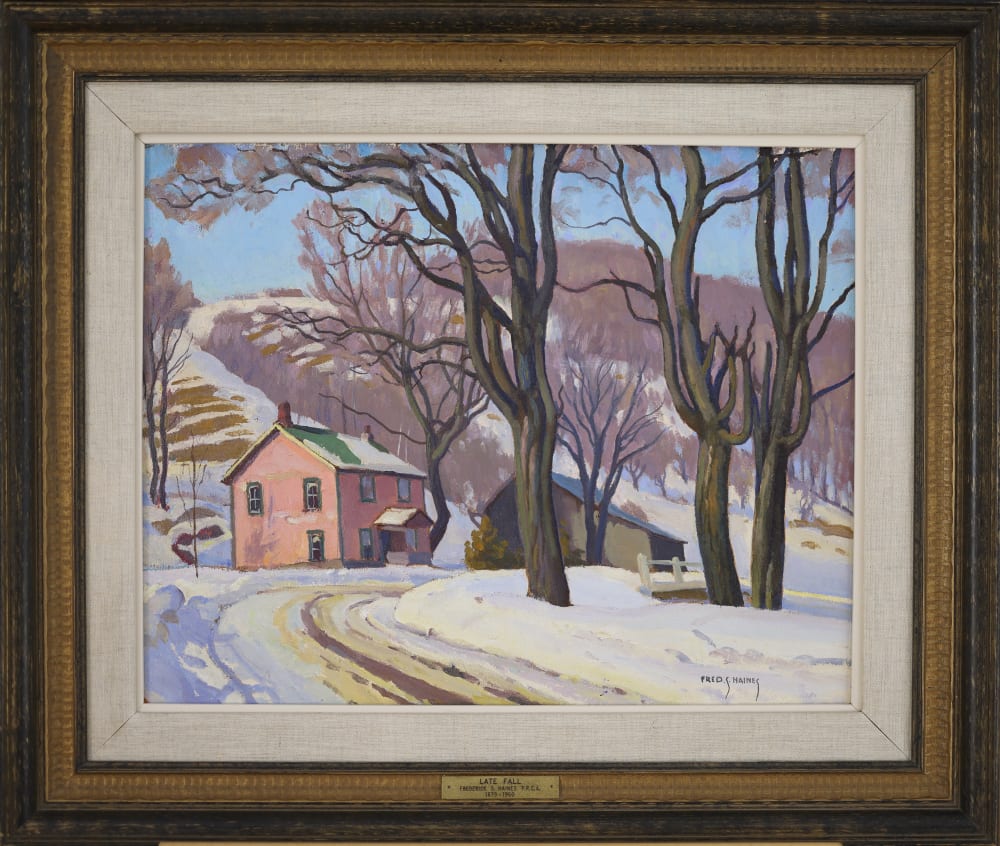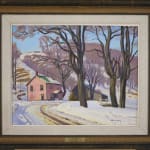Frederick Stanley Haines Canadian, 1879-1960
Further images
In Frederick Stanley Haines' Late Fall, viewers are transported to a serene winter landscape characterized by the transition between autumn and winter. The scene unfolds amidst a blanket of pristine snow, with bare trees standing sentinel against the frosty air.
The centerpiece of the composition is a solitary house, nestled in the heart of the rural landscape. The house exudes warmth and comfort amidst the wintry chill, its chimney emitting wisps of smoke that blend into the cold, crisp air. The architecture suggests a cozy, traditional design, with sturdy walls and a pitched roof adorned with a layer of snow.
Surrounding the house, the landscape is transformed by the onset of winter. The trees, stripped of their foliage, stand stark against the snowy backdrop, their branches reaching skyward like skeletal fingers. The absence of leaves creates a sense of desolation and tranquility, enhancing the solitude of the scene. The snow-covered ground stretches out in all directions, interrupted only by the occasional footprint or animal track. The muted tones of the winter palette dominate the landscape, with shades of white, gray, and brown evoking the quiet beauty of the season.
Overall, Late Fall by Frederick Stanley Haines is a captivating portrayal of the serene beauty of winter, inviting viewers to immerse themselves in the tranquil solitude of the snowy countryside.






